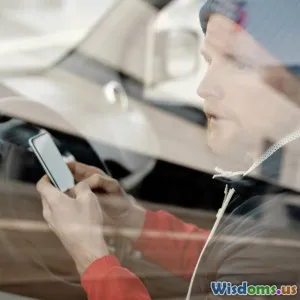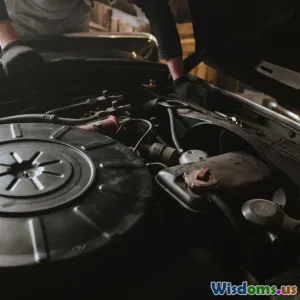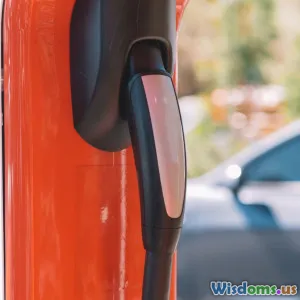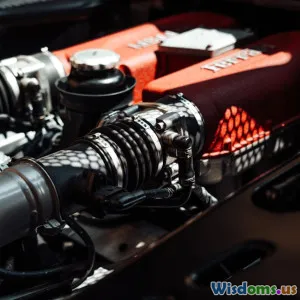
What Does 5G Connectivity Mean for Vehicle to Vehicle Safety
8 min read Explore how 5G connectivity revolutionizes vehicle-to-vehicle safety, enabling real-time data exchange for safer roads. (0 Reviews)
What Does 5G Connectivity Mean for Vehicle to Vehicle Safety?
Introduction
Imagine a future where cars communicate instantly with each other, warning drivers before a collision occurs, coordinating maneuvers effortlessly, and virtually eliminating preventable accidents. This vision is edging closer to reality thanks to 5G connectivity and its impact on vehicle-to-vehicle (V2V) safety. As the fifth-generation wireless technology begins to roll out globally, it promises ultra-low latency, higher bandwidth, and increased reliability, all crucial for the rapid exchange of safety-critical data between vehicles.
In this article, we’ll explore the transformative role 5G plays in elevating V2V safety, the challenges that come with implementation, and how this technology could revolutionize road safety standards worldwide.
Understanding Vehicle-to-Vehicle Safety
Vehicle-to-vehicle communication refers to the ability of vehicles to wirelessly exchange information like speed, location, direction, and road hazards without human intervention. V2V systems typically operate on Dedicated Short-Range Communications (DSRC) or Cellular Vehicle-to-Everything (C-V2X) technologies.
Existing Challenges in V2V
While earlier communication methods such as DSRC have paved the way, they come with limitations:
- Latency Issues: Safety warnings must be acted upon in milliseconds; delays can reduce effectiveness.
- Limited Range and Bandwidth: Some systems fail to handle dense traffic or complex urban environments well.
- Fragmented Infrastructure: Lack of standardized global frameworks for V2V implementation.
This is where 5G connectivity offers a significant leap forward.
How 5G Connectivity Enhances Vehicle-to-Vehicle Safety
Ultra-Low Latency Enables Instantaneous Responses
One of 5G's standout features is its ability to reduce latency to as low as 1 millisecond, a dramatic improvement over 4G's typical 50-100 milliseconds. This rapid response time is critical in V2V, allowing vehicles to transmit and receive real-time hazard alerts instantly. For example, if a car ahead suddenly brakes hard, nearby vehicles can receive an immediate alert to slow down, preventing pile-ups.
According to Qualcomm, this sub-millisecond communication can enable collision avoidance systems that outpace human reaction times, effectively saving lives.
Massive Data Throughput Facilitates Complex Safety Applications
5G networks support much higher data rates—up to 10 Gbps—enabling the simultaneous transmission of detailed data such as high-definition maps, sensor feeds, and radar data. This capability allows vehicles to share intricate information about their surroundings beyond simple messages.
Example: Tesla's recent Over-the-Air updates demonstrate how more data exchange can empower vehicles to self-improve. In a 5G-enabled V2V environment, cars could share richer sensory inputs, providing better situational awareness, especially in low-visibility conditions.
Enhanced Reliability Ensures Safety Messages are Delivered
Safety-critical messages must be delivered without fail, even in congested network conditions. 5G’s improved reliability and network slicing technology allow reserved bandwidth for V2V traffic. This ensures that emergency alerts get prioritized and arrive without interruption.
Cities like Tokyo are already trialing 5G-powered V2V in public transport fleets to leverage this reliable communication to reduce accidents.
C-V2X: The 5G-Enabled Evolution of V2V
Cellular Vehicle-to-Everything (C-V2X), which uses 4G and now 5G networks, is rapidly becoming the preferred V2V standard over DSRC. C-V2X supports not only vehicle-to-vehicle but also vehicle-to-infrastructure and vehicle-to-pedestrian communication.
A European project, 5GCARMEN, is pioneering interconnected V2X services using 5G, aiming to reduce traffic congestion and improve safety across EU roads by 2025.
Real-World Impacts and Use Cases
Reducing Multi-Car Pileups
Highways are notorious for chain-reaction collisions. Using 5G-enabled V2V communication, a sudden hazard detected by a vehicle—say sharp braking due to debris—can be broadcast instantly to trailing vehicles. This coordinated alert system can reduce reaction time and prevent accidents from escalating.
In an NHTSA study, V2V systems showed potential in reducing non-impaired driver crashes by up to 80% when widely adopted.
Coordinated Emergency Vehicle Maneuvers
Ambulances and fire trucks can leverage 5G to communicate their position and trajectory to nearby vehicles, which receive proactive alerts to clear the path quickly. This coordination not only speeds emergency responses but also reduces the likelihood of secondary accidents.
Improving Pedestrian and Cyclist Safety
By fusing 5G with sensors and cameras, vehicles can communicate hazards involving pedestrians and cyclists via vehicle-to-pedestrian (V2P) technology. Cities with dense foot traffic, like Amsterdam and New York, are testing these systems to safeguard vulnerable road users.
Challenges and Considerations
While promising, the widespread deployment of 5G for V2V safety faces hurdles:
- Infrastructure Investment: Building a reliable 5G network nationwide requires substantial funding.
- Interoperability and Standards: Ensuring vehicles from different manufacturers and regions communicate seamlessly.
- Privacy and Security: Protecting sensitive location data and preventing hacking of automotive systems.
- Adoption Rate: Full benefits realize only when a critical mass of vehicles equipped with compatible 5G V2V systems is on the road.
Industry partnerships, government policies, and public-private collaborations will be pivotal in overcoming these issues.
Conclusion
5G connectivity heralds a new era in vehicle-to-vehicle safety, transforming cars into proactive agents capable of anticipating and responding to hazards far faster than human drivers alone. Its ultra-low latency, high bandwidth, and enhanced reliability address critical limitations in earlier communication technologies, paving the way for decreased accidents and smarter roadways.
As automakers integrate 5G-enabled V2V systems and governments invest in 5G infrastructure and safety standards, drivers can look forward to a future where road safety is fundamentally redefined—less reactive and distinctly more intelligent.
Unlocking this potential will require coordination across technology, regulation, and industry, but the promise of drastically safer journeys makes the journey worthwhile.
Key Takeaway
5G is more than just faster internet for cars; it’s a life-saving technology primed to revolutionize how vehicles interact, ensuring every trip is safer and smarter.
References
- Qualcomm, 5G for Vehicle to Vehicle Communication, 2023
- NHTSA, Impact Assessment of Vehicle-to-Vehicle Communication Systems, 2022
- 5GCARMEN Project, EU Trials for 5G Connected Mobility, 2023
- S. Chen et al., “Latency and Reliability in 5G V2X Communications,
Rate the Post
User Reviews
Popular Posts





















